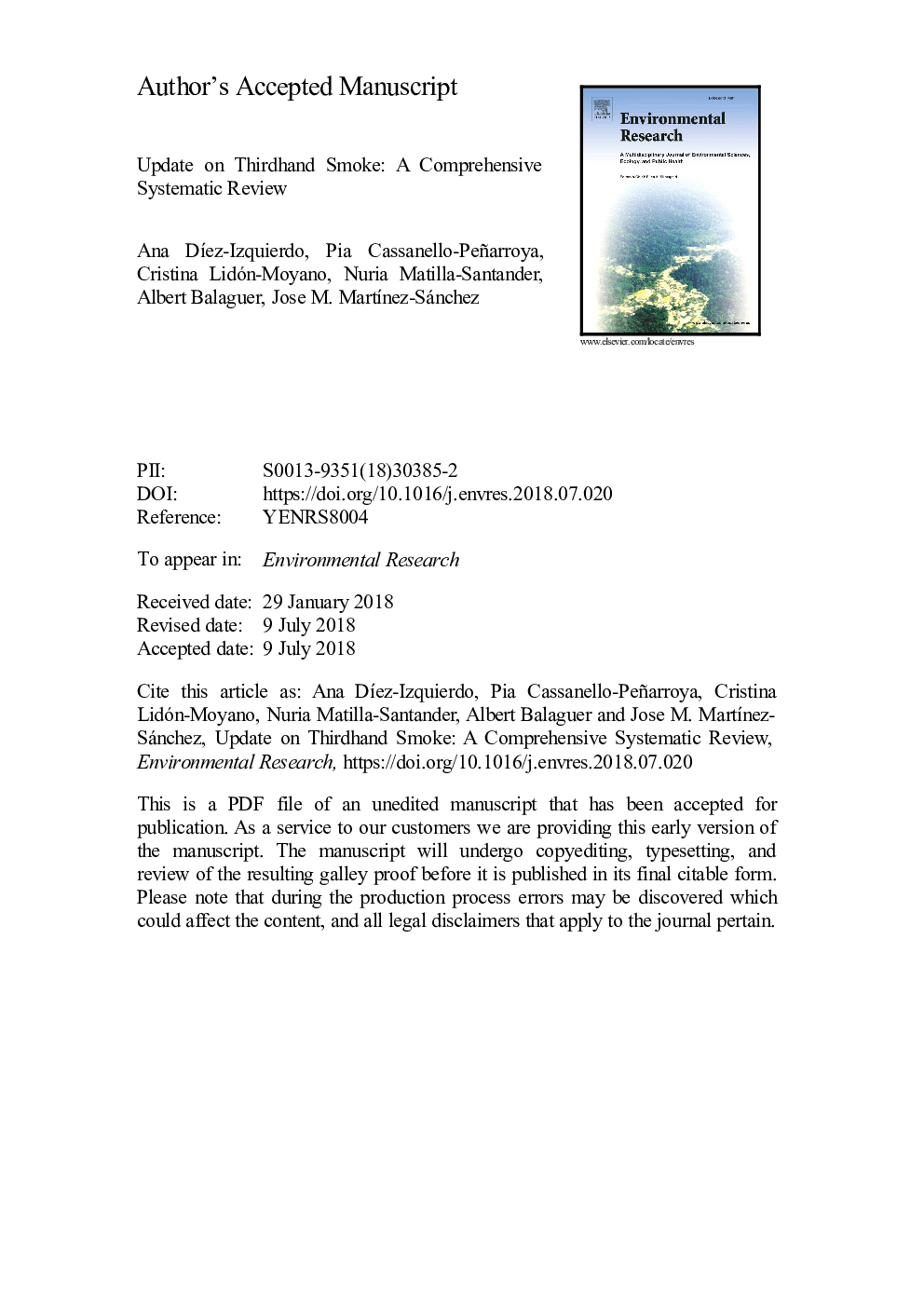| Article ID | Journal | Published Year | Pages | File Type |
|---|---|---|---|---|
| 8868801 | Environmental Research | 2018 | 140 Pages |
Abstract
Numerous specific biomarkers of THS were evaluated, with the most common being nicotine, nitrosamines, and cotinine. The most common method of preparing THS dust samples were cotton wipes, while chromatography, used alone or coupled with mass spectrometry, was the most common analytical technique. We have tried to establish common bases after reviewing all the current literature of the THS although, there is great heterogeneity between the studies and we have not always succeeded. The studies in this review demonstrate the harmful effects of THS on health in cells, in animal models, and in people including children. However, in people, the long-term effects remain unknown and more research is needed. These studies show that knowledge about THS and its potential harmful effects are poorly understood among the general population. For this reason, THS should receive greater emphasis in education and awareness policies.
Keywords
VOCsSAFNNALCINAHLFeNONNKTSETSNAE-cig3-EthenylpyridineWOSSHS4-(methylnitrosamino)-1-(3-pyridyl)-1-butanol4-(methylnitrosamino)-1-(3-pyridyl)-1-butanoneTHsexhaled nitric oxideUnited StatesNICUCochrane Central Register of Controlled TrialsMinMUHminutesSecondhand smokehoursSecondary aerosol formationCumulative Index to Nursing and Allied Health Literaturetobacco smoke exposureCentralTobacco-specific nitrosaminesPolycyclic aromatic hydrocarbonsPAHsneonatal intensive care unitWeb of Science
Related Topics
Life Sciences
Environmental Science
Health, Toxicology and Mutagenesis
Authors
Ana DÃez-Izquierdo, Pia Cassanello-Peñarroya, Cristina Lidón-Moyano, Nuria Matilla-Santander, Albert Balaguer, Jose M. MartÃnez-Sánchez,
